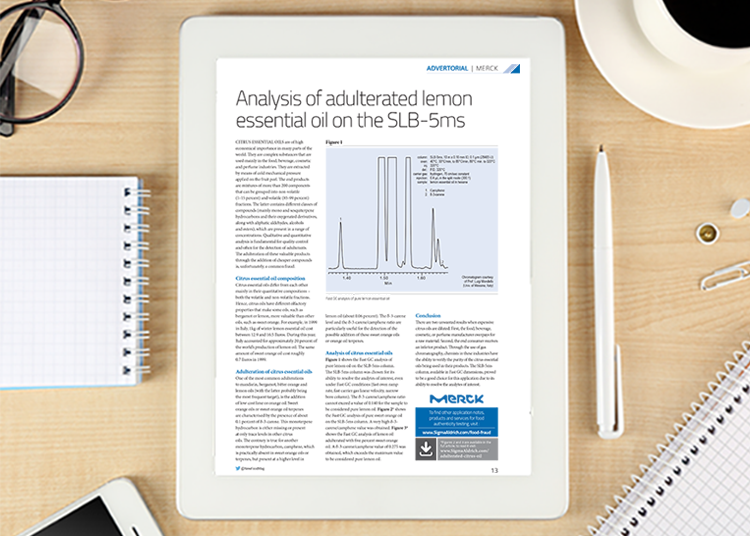Analysis of adulterated lemon essential oil on the SLB-5ms
- Like
- Digg
- Del
- Tumblr
- VKontakte
- Buffer
- Love This
- Odnoklassniki
- Meneame
- Blogger
- Amazon
- Yahoo Mail
- Gmail
- AOL
- Newsvine
- HackerNews
- Evernote
- MySpace
- Mail.ru
- Viadeo
- Line
- Comments
- Yummly
- SMS
- Viber
- Telegram
- Subscribe
- Skype
- Facebook Messenger
- Kakao
- LiveJournal
- Yammer
- Edgar
- Fintel
- Mix
- Instapaper
- Copy Link
Posted: 21 March 2020 | Merck | No comments yet
Citrus essential oils are of high economical importance in many parts of the world. They are complex substances that are used mainly in the food, beverage, cosmetic and perfume industries.
They are extracted by means of cold mechanical pressure applied on the fruit peel. The end products are mixtures of more than 200 components that can be grouped into non-volatile (1‑15 percent) and volatile (85-99 percent) fractions. The latter contains different classes of compounds (mainly mono and sesquiterpene hydrocarbons and their oxygenated derivatives, along with aliphatic aldehydes, alcohols and esters), which are present in a range of concentrations. Qualitative and quantitative analysis is fundamental for quality control and often for the detection of adulterants. The adulteration of these valuable products through the addition of cheaper compounds is, unfortunately, a common fraud.










